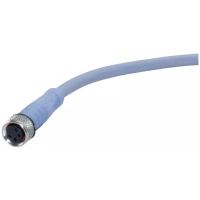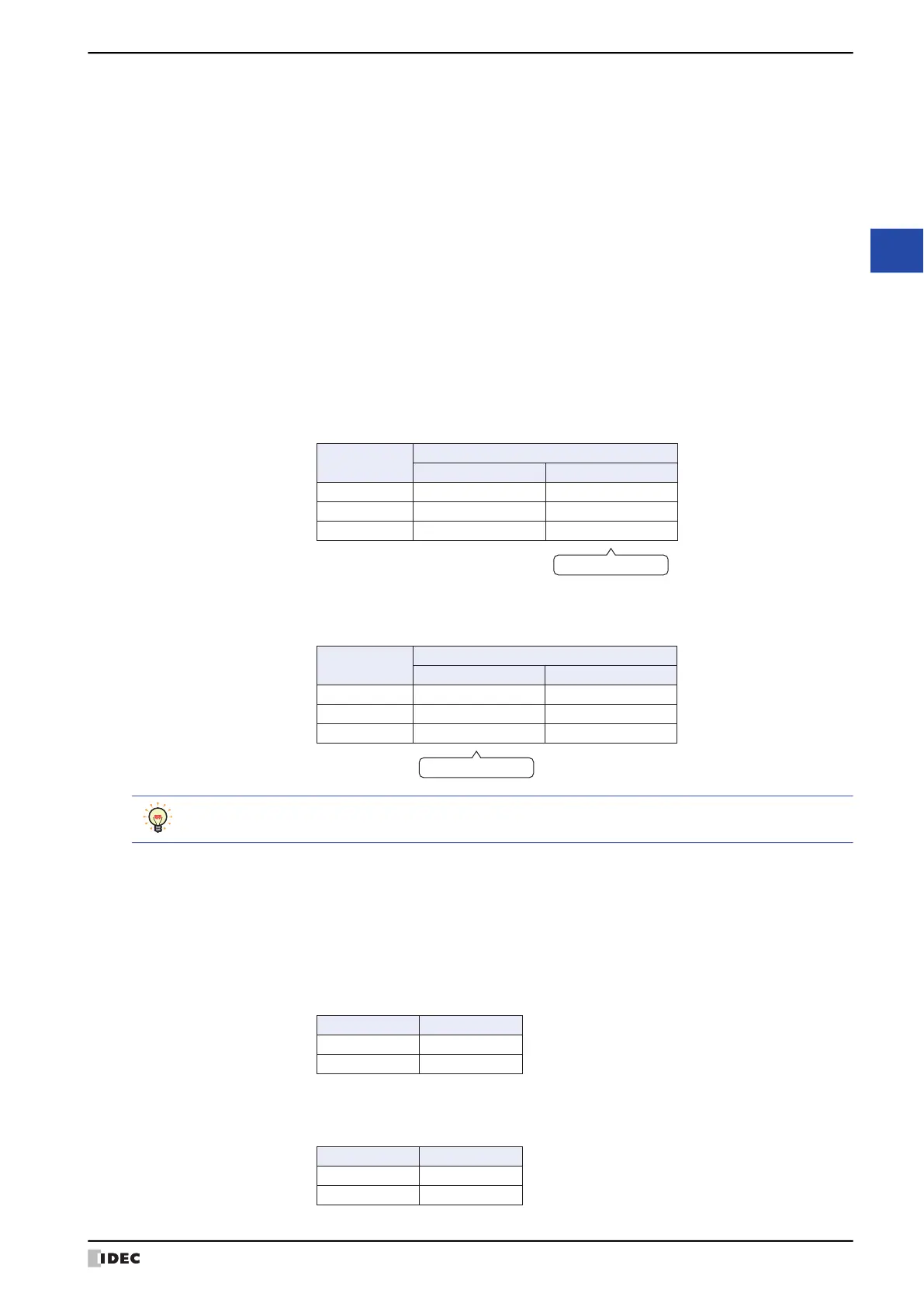WindO/I-NV4 User’s Manual 4-29
3 Project Settings Dialog Box
4
Project Settings
■ Use Device Cache
Select this check box to execute processing by reading all the values of the external device addresses configured for a
screen when switching the base screen or when displaying a popup screen.
■ Start Part with synchronous
Select this check box to operate commands and HMI Special Internal Relays LSM1, LSM2, LSM3, and LSM5 after
reading all the values of the external device addresses configured on the screen.
When this check box is cleared, all processing is immediately executed when the screen is displayed.
■ Start from 0 in Always Entry Mode of Numerical Input
Select this check box to display 0 when a Numerical Input that has the Always Entry Mode check box selected on
the General tab is displayed on the screen. When this check box is cleared, the value of device address is displayed.
This option is reflected for all Numerical Inputs configured in the project.
■ Storage Method of String Data
Selects the handling method for text entered with the Character Input and values of device addresses read by the
Message Display.
■ Storage Method of 32-bit Numerical Data for Internal Devices
Selects the handling method for values of internal devices when UBIN32(D), BIN32(L), BCD8(EB), or Float32(F)
is selected for Data Type from the following. The initial value is set according to the communication driver that was
selected when the project was created. When the bit devices in control devices are handled as words, this setting is
always the from Lower word.
from Upper byte: Values of device addresses are read from and written to the upper order byte.
Example: When the text ABCDE is entered with the Character Input and written to the destination
device address LDR100
from Lower byte: Values of device addresses are read from and written to the lower order byte.
Example: When the text ABCDE is entered with the Character Input and written to the destination
device address LDR100
Device address
Stored value
Upper byte Lower byte
LDR100 'A' = 41 (Hex) 'B' = 42 (Hex)
LDR101 'C' = 43 (Hex) 'D' = 44 (Hex)
LDR102 'E' = 45 (Hex) 0
NULL terminang character
Device address
Stored value
Upper byte Lower byte
LDR100 'B' = 42 (Hex) 'A' = 41 (Hex)
LDR101 'D' = 44 (Hex) 'C' = 43 (Hex)
LDR102 0 'E' = 45 (Hex)
NULL terminang character
When handling strings, 0 is written to the device address as the NULL terminating character and treated as
the end of the string.
from Upper word: Values of internal devices are read from and written to the upper order word.
Example: When Data Type for the Numerical Input is UBIN32(D) and the numerical value
12345678 (Hex) was entered and written to destination device address LDR100
from Lower word: Values of internal devices are read from and written to the lower order word.
Example: When Data Type for the Numerical Input is UBIN32(D) and the numerical value
12345678 (Hex) was entered and written to destination device address LDR100
Device address Stored value
LDR100 1234 (Hex) Upper word
LDR101 5678 (Hex) Lower word
Device address Stored value
LDR100 5678 (Hex) Upper word
LDR101 1234 (Hex) Lower word

